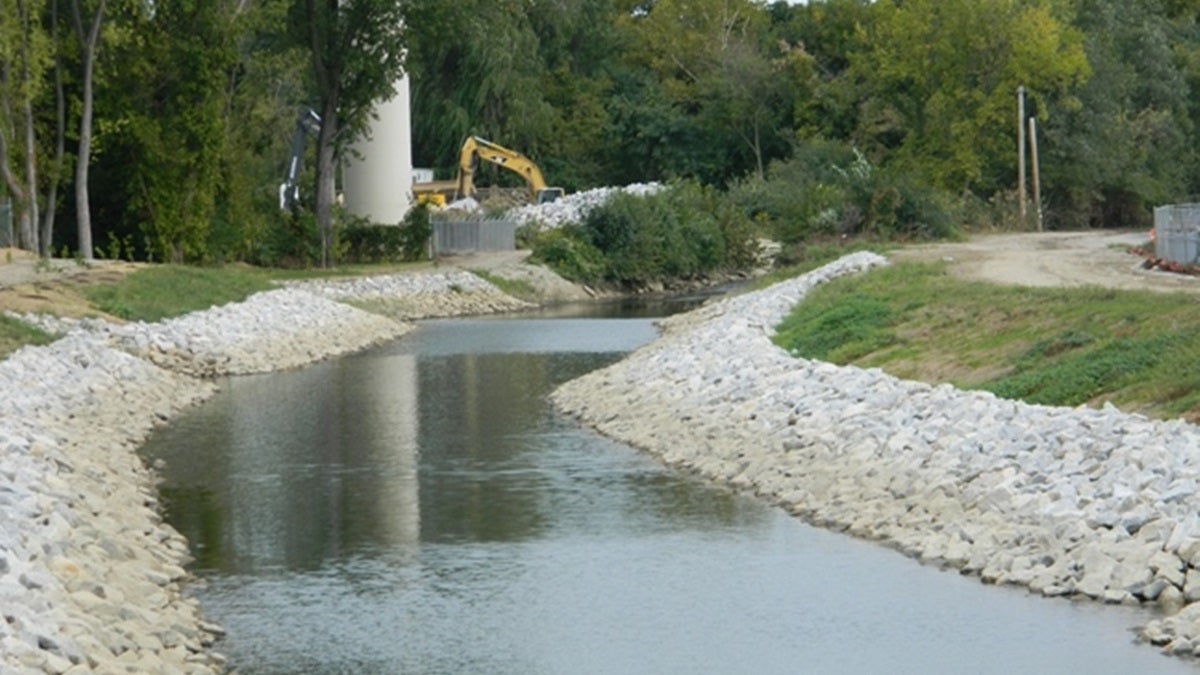Delaware flood-prone business owner drops flood insurance [video]

The lower portion of the completed Little Mill Creek flood abatement project (DNREC photo)
Doug Suiter’s business in Wilmington has been flooded 32 times, but this year he dropped his flood insurance.
You read correctly. Suiter dropped his flood insurance despite the fact that his car repair shop, General Automotive, sits on a floodplain.
General Automotive is located on Brookside Drive in Wilmington, steps away from Little Mill Creek. Whenever Nor’easters, hurricanes or heavy rainfall hover over the city, Suiter said the tributary of the Christina River would overflow its banks sending water into his shop.
But Suiter said he’s now 95 percent confident flooding impacts have been reduced dramatically. The U.S. Army Corps of Engineers recently completed a project along the creek designed to mitigate flooding.
“Instead of having a 1-person bathtub, we now have a 2- or 3-person bathtub. We can hold more water” Suiter said. “So instead of say having 2 feet of water in the shop, I may only have 6 inches and that’s a huge impact.”
Crews widened two sections of the creek and deepened the lower section near Suiter’s shop. Trees were also planted and more than 11,000 tons of rocks were put in place to further slow floodwaters.
Work on the upper portion of the creek in Elsmere was finished in 2007. The channel was widened between the Kirkwood Highway Bridge and the CSX railroad bridge to protect homes from constant flooding.
‘This project has taken 25 years’
July 5,1989 was Suiter’s first, and by far the worst, flooding.
“I lost a lot of customers. Some of ’em I lost due to the fact that their cars were here, they were destroyed and they expected me to pay for them,” said Suiter, who nearly lost all of his equipment too. He didn’t have flood insurance back then, but was eventually able to get the business back up and running.
Shortly thereafter, federal, state and local leaders came up with a plan to mitigate the flooding there. To say Suiter was thrilled is an understatement, but at the time, he didn’t realize the project would take 25 years to be completed. In the meantime, Suiter endured what seemed like an endless cycle of flood, cleanup, rebuild.
It wasn’t until 2007 when the residential part of the project was finished in Elsmere.
“Those of us affected here felt that, okay, that project’s done. Let’s shift into gear and get going and get this end of this project completed. And that took 8 more years,” Suiter said.
Finally, in September of this year, all of those involved celebrated the completion of the $7 million project along Little Mill Creek.
“This project has taken 25 years, many parts of this project were done multiple times. And the second and third time they’re done, it still costs money,” said Suiter, who understands when so many levels of government are involved, efficiency often falls by the wayside.
An initial cost estimate for the project was around $1 million in the mid-1990s. Add inflation and 25 years, the final price tag was about $7 million.
At the end the day, Suiter is just glad the project is done, even if it took decades.
During a news conference marking September’s completion of the project, Delaware Dept. of Natural Resources and Environmental Control Secretary David Small said, “This is probably not a project that captures the mind of the broader public, but if you’re here and you’ve been affected by this flooding over the years, you know what a big deal this is and getting this done.”
And no one knows this better than Doug Suiter.
WHYY is your source for fact-based, in-depth journalism and information. As a nonprofit organization, we rely on financial support from readers like you. Please give today.


